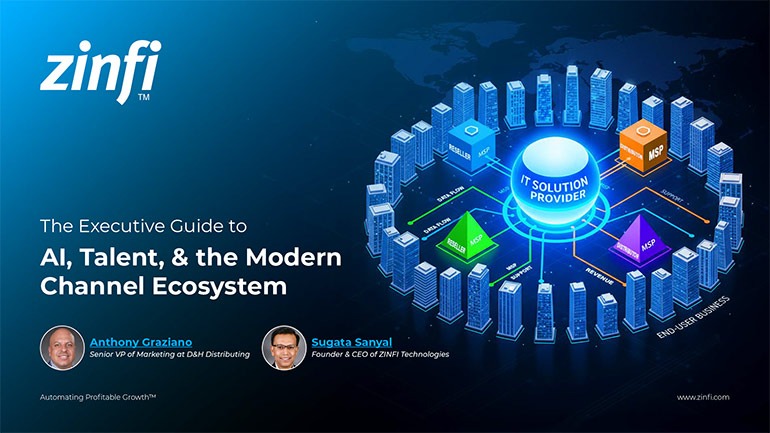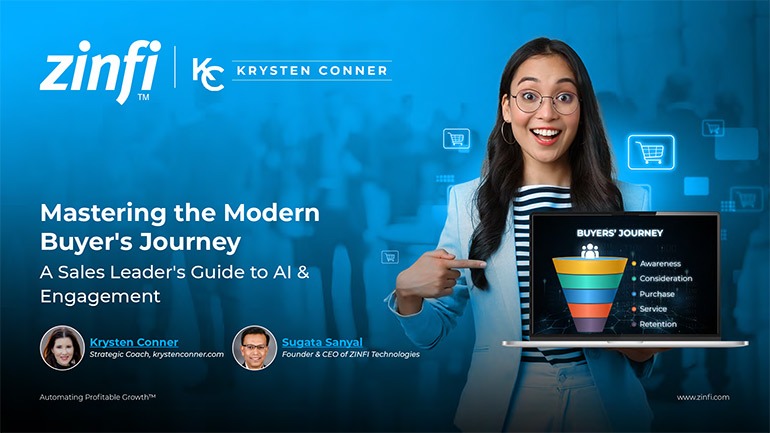Best Practices Articles

7 Reasons to Deploy A PRM System for Manufacturing Organizations
Most manufacturers have always had the distribution networks to sell their products locally and globally. With the advent of information technology, vendors of all kinds introduced fast-paced selling into a channel environment, but in fact manufacturers have relied on local and global trades from the early days of modern history. Whether it was Chinese silk, Indian spices or Italian marble, in the end they all found businesspeople who were willing to take the risks posed by pirates, bandits, disease and wars to transport goods from one part of the word to the other. While the threats of pirates and bandits have subsided considerably over the years, manufacturers still struggle at times to keep pace with more technology-savvy hardware and software vendors when it comes to deploying automation to support a global channel. In this article, we will explore how manufacturers can benefit from partner relationship management (PRM) systems, and what factors they should take into consideration to find the right solution for their business.
The manufacturing segment in the US is about twice the size of the high-tech segment, but it accounts for four times the number of small, medium and large firms. While the US high-tech segment has seen rapid growth among independent software vendors (ISVs) in recent years, the manufacturing segment has remained relatively flat. At a global level, manufacturing organizations are not only forming across all countries, but they are also changing rapidly due to automation, predictive analytics and, most recently, artificial intelligence. So, while manufacturers have invested into state-of-the-art manufacturing and process technologies to stay ahead of their competitors, in most cases they have not yet deployed automation on the front end—i.e., marketing and sales—or in the partner relationship management (PRM) arena.
Typically, manufacturers’ back-end supply chain and manufacturing processes are using the latest technologies, but most front-end investments have been skimpy. Over the past 40 years, manufacturers have invested in automation for activities like enterprise resource planning (ERP) and enterprise asset management (EAM). These activities are mostly focused on logistics, inventory management, work in process (WIP) management, return of capital, etc. To address the front end, most organizations have tried to get by using back-end technologies, which are not purpose-built for digital marketing and sales or for PRM activities. This suggests that PRM systems could make a positive and substantial impact for manufacturers.
As a result of this lack of investment in front-end technologies, most manufacturers tend to rely on archaic software platforms, which are not only work poorly for the latest digital marketing and sales processes, but also fail to address the need for a holistic approach to creating an integrated buyer’s journey. These problems are compounded if the manufacturing organization sells both directly and via a channel. The absence of an integrated approach not only impacts profitable growth, but also leaves channel partners deeply dissatisfied. The failure to integrate across the buyer’s journey leads to unnecessary complexity and friction for manufacturers, as does the absence of highly effective channel programs offered by vendors from other high-growth segments, like technology and finance.
All of this means there is a huge opportunity for manufacturers to build a competitive advantage through a network of digitally enabled wholesalers, distributors, resellers and other partners who can augment their solution, extend their reach and add value to an installation above and beyond the preliminary purchase. We have seen over the years that manufacturers of highly commoditized products, such as piping, water filtration, measuring equipment and so on, can not only achieve dramatic reductions in operating costs, but also increase reach through proper deployment of partner relationship management (PRM) systems.
We have discussed in multiple articles what a partner relationship system is, what features it needs to have and how best to deploy it. We have also discussed in other articles how a PRM system is different from a customer relationship management (CRM) system. I won’t explore these two areas further in this article. However, I do want to take a few minutes to talk about how a manufacturing organization can plan the deployment of an effective PRM system.
Let me summarize briefly the seven core reasons a manufacturer should select a partner relationship management (PRM) system to automate its indirect (channel) sales motions:
- Overall channel strategy – This should address how the channel plays a role in current and future growth ambitions of the manufacturing organization. Channel strategy should also address various go-to-market motions, such as direct selling, selling via original equipment manufacturers—where there is a primary vendor who buys parts from other vendors—and after-market selling—e.g., when something is sold via one equipment manufacture, but post-purchase. The nature of PRM systems will depend on the exact nature of overall channel strategy.
- Sales mix plan – Selection of a PRM system greatly depends not just on the overall go-to-market plan, but also on the overall direct-versus-indirect (channel) sales ratio or mix. If most of the sales are flowing through the channel, the sales organization is essentially there to support partners and only a few deals are taken directly, then a PRM system would suffice without installing a dedicated CRM system. However, if the direct sales are substantial and complex, then having a dedicated CRM system can help as well.
- Onboarding workflows – Depending on the nature of the product segment, if there is a constant flow of new products, not necessarily stock keeping units (SKUs), then it is essential for the manufacturer to have a logical onboarding program where channel partners are educated in new product training, selling, incentives, etc., on an ongoing basis. Onboarding automation requires a flexible PRM system that can not only be configured by product lines and geographies, but also re-configured quickly and frequently depending on the nature of changes.
- Learning management – In today’s digital world, many manufacturers still engage in a physical training and delivery mode. There are two primary reasons for this: First, the partner base is not digital-savvy and/or second, the vendor doesn’t have digital content to distribute. Both are significant barriers, but the latter issue can be easily overcome with some incremental investment and digitization of content. The ROI from a digital learning management application—a part of any state-of-the-art PRM system—is significant.
- Sales enablement – One of the key aspects of a manufacturing channel is the complexity of product-related content that can be associated with hundreds, even millions, of product parts or SKUs. Even today, one shouldn’t be surprised to see manufacturers print parts books and ship them to their resellers on a regular basis – at times even weekly or monthly. The good news is there is a better way, and that is digitization of all of this product-related content via a state-of-the-art PRM system.
- Lead management – Depending on the nature of the sales motion and mix, if the manufacturing organization wants to distribute leads generated by its direct marketing team to channel partners, then a PRM system is essential. As we have discussed in many other articles, for lead management to work, aligning strategy, structure, staffing, programs, processes and platforms is essential. This is where a state-of-the-art PRM system can outshine any standard CRM platforms. Direct-to-partner lead distribution and management is typically purpose-built in PRM platforms, while CRMs need to be fully customized to fulfill this function
- Reporting – Finally, as with any business system, in manufacturing it is very difficult to know where the business has been, where it is and where it is going without dynamic analytics. It is essential not only to automate various workflows, including distribution of digital content to partners, but also to have cross-application analytics to understand which partners are selling or not, and why or why not. This is where a state-of-the-art PRM system can make or break a PRM deployment, because analytics are crucial to drive business transformation and changes.
In addition to all the reasons I have already give, there is way in which PRM systems can make a significant difference by integrating direct and indirect sales motions. Logically, we all know having one system that can do it all is better than trying to patch together multiple systems. While I have already pointed out there are business cases where a dedicated CRM system is necessary—e.g., where the direct sales motions greatly vary from channel sales motion, and is also quite complex—in general, if there isn’t a lot of difference between direct and indirect sales motion then a Unified Partner Management (UPM) platform would be is a much better solution. A leading UPM solution like ZINFI’s platform would not only meet the need for a standard PRM system, but also bring in other capabilities, such as direct marketing and selling automation, for direct sales.
Today, there is no other system in the marketplace that can address both, but in many cases where the direct sales and indirect sales motion is pretty much the same, it makes a lot of sense to unify all sales activity into one platform that has fully integrated CRM and PRM. This is the advantage of a system like ZINFI’s UPM platform. It also dramatically streamlines automated (digital) marketing activities, whereby the direct marketing team can drive leads leveraging the marketing module, but then distribute them via a CRM-PRM workflow to the partner base, and then have partners nurture and close using various other marketing and sales applications from the PRM system. This is truly the holy grail of end-to-end marketing and selling automation. The great news is that it is highly achievable today.
Best Practices Guidebook
 Modernizing Channel Marketing: AI and Ecosystem Enablement Best Practices
Modernizing Channel Marketing: AI and Ecosystem Enablement Best PracticesDownload for FREE
 The Channel’s Shift to Partner-Led With AI Best Practices
The Channel’s Shift to Partner-Led With AI Best PracticesDownload for FREE
 Hyperscalers, ISVs, and AI: Shaping the Future of B2B Software Distribution
Hyperscalers, ISVs, and AI: Shaping the Future of B2B Software DistributionDownload for FREE
 Definitive Guide to a Partner Ecosystem-First Sales Strategy
Definitive Guide to a Partner Ecosystem-First Sales StrategyDownload for FREE
 The Partner-Led Digital and AI Transformation Best Practices
The Partner-Led Digital and AI Transformation Best PracticesDownload for FREE
 Startup Talent Recruitment: Hiring Missionaries, Not Mercenaries
Startup Talent Recruitment: Hiring Missionaries, Not MercenariesDownload for FREE
 The Future of Partner Relationship Management with AI in Partnerships
The Future of Partner Relationship Management with AI in PartnershipsDownload for FREE
 Cybersecurity for the 99%: Strategies from the Frontline
Cybersecurity for the 99%: Strategies from the FrontlineDownload for FREE
 Mastering Partner Relationships: A Strategic Approach to Business Growth
Mastering Partner Relationships: A Strategic Approach to Business GrowthDownload for FREE
 Mastering Partner Relationship Management: Keys to SaaS Channel Success
Mastering Partner Relationship Management: Keys to SaaS Channel SuccessDownload for FREE
 Navigating the AI Revolution: Guide for Partners in the Microsoft Ecosystem
Navigating the AI Revolution: Guide for Partners in the Microsoft EcosystemDownload for FREE
 Mastering the Modern Buyers Journey: Sales Leader’s Guide to AI & Engagement
Mastering the Modern Buyers Journey: Sales Leader’s Guide to AI & EngagementDownload for FREE










